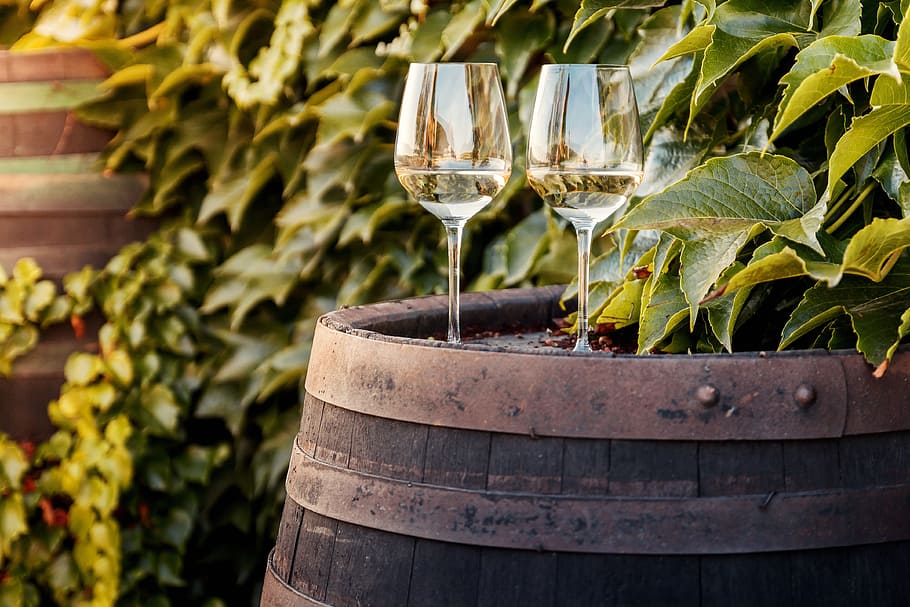The use of wine tasting descriptors allows the taster to qualitatively relate the aromas and flavors that the taster experiences and can be used in assessing the overall quality of wine.
Wine writers differentiate wine tasters from casual enthusiasts; tasters attempt to give an objective description of the wine’s taste (often taking a systematic approach to tasting), casual enthusiasts appreciate wine but pause their examination sooner than tasters.
The primary source of a person’s ability to taste wine is derived from their olfactory senses.
A taster’s own personal experiences play a significant role in conceptualizing what they are tasting and attaching a description to that perception.
The individual nature of tasting means that descriptors may be perceived differently among various tasters.
The following is an incomplete list of wine tasting descriptors and a common meaning of the terms. These terms and usage are from Karen MacNeil’s 2001 edition of The Wine Bible unless otherwise noted.
A–C
Acidic: A wine with a noticeable sense of acidity. It’s detected by the mouth watering sensation.
Aftertaste: The taste left on the palate after wine has been swallowed. “Finish” is a synonym.
Alcoholic: A wine that has an unbalanced presence of too much alcohol.
Aroma: The smell of a wine. The term is generally applied to younger wines, while bouquet is reserved for more aged wines.
Astringent: An overly tannic white wine.
Autolytic: Aroma of “yeasty” or acacia-like floweriness commonly associated with wines that have been aged sur lie.
Baked: A wine with a high alcohol content that gives the perception of stewed or baked fruit flavors. May indicate a wine from grapes that were exposed to the heat of the sun after harvesting.
Balanced: A wine that incorporates all its main components—tannins, acid, sweetness, and alcohol—in a manner where no one single component stands out.
Big: A wine with intense flavor, or high in alcohol.
Bitter: An unpleasant perception of tannins.
Body: The sense of alcohol in the wine and the sense of feeling in the mouth. A wine is usually described as light, medium or full body.
Bouquet (/buːˈkeɪ/, French: [bu.kɛ]): The layers of smells and aromas perceived in a wine.
Brilliance: When describing the visual appearance of the wine, it refers to high clarity, very low levels of suspended solids. When describing fruit flavors, it refers to noticeable acidity and vivid intensity.
Buttery: A wine that has gone through malolactic fermentation and has a rich, creamy mouthfeel with flavors reminiscent of butter.
Chewy: The sense of tannins that is not overwhelming. It is not necessarily a negative attribute for wine.
Chocolaty: The flavors and mouthfeel associated with chocolate, typically among rich red wines such as Cabernet Sauvignon and Pinot noir.
Closed: A wine that is not very aromatic.
Cloying: A wine with a sticky or sickly sweet character that is not balanced with acidity.
Coarse: A wine with a rough texture or mouthfeel. Usually applies the perception of tannins.
Complex: A wine that gives a perception of being multi-layered in terms of flavors and aromas.
Concentrated: Intense flavors.
Connected: A sense of the wine’s ability to relay its place of origin or terroir.
Corked: A wine that has cork taint.
Crisp: A pleasing sense of acidity in the wine.
D–H
Depth: A wine with several layers of flavor. An aspect of complexity.
Dirty: A wine with off flavors and aromas that most likely resulted from poor hygiene during the fermentation or bottling process.
Dry: A wine that is lacking the perception of sweetness.
Earthy: This can mean a wine with aromas and flavor reminiscent of earth, such as forest floor or mushrooms. It can also refer to the drying impression felt on the palate caused by high levels of geosmin that occur naturally in grapes.
Effervescent: Sparkling/Carbonated sensation, light carbonation in categorically “still” wine.
Elegant: A wine that possess finesse with subtle flavors that are in balance.
Expressive: A wine with clearly projected aromas and flavors.
Extracted: A wine with concentrated flavors, often from extended skin contact, trading a rougher youth for enhanced ageability.
Fallen over: A wine that, at a relatively young age, has already gone past its peak (or optimal) drinking period and is rapidly declining in quality is said to have “fallen over”.
Fat: A wine that is full in body and has a sense of viscosity. A wine with too much fat that is not balanced by acidity is said to be “flabby” or “blowzy”
Finesse: A wine of high quality that is well balanced.
Finish: The sense and perception of the wine after swallowing.
Firm: A stronger sense of tannins.
Flabby: A lacking sense of acidity.
Source
en.wikipedia.org/wiki/Wine_tasting_descriptors
